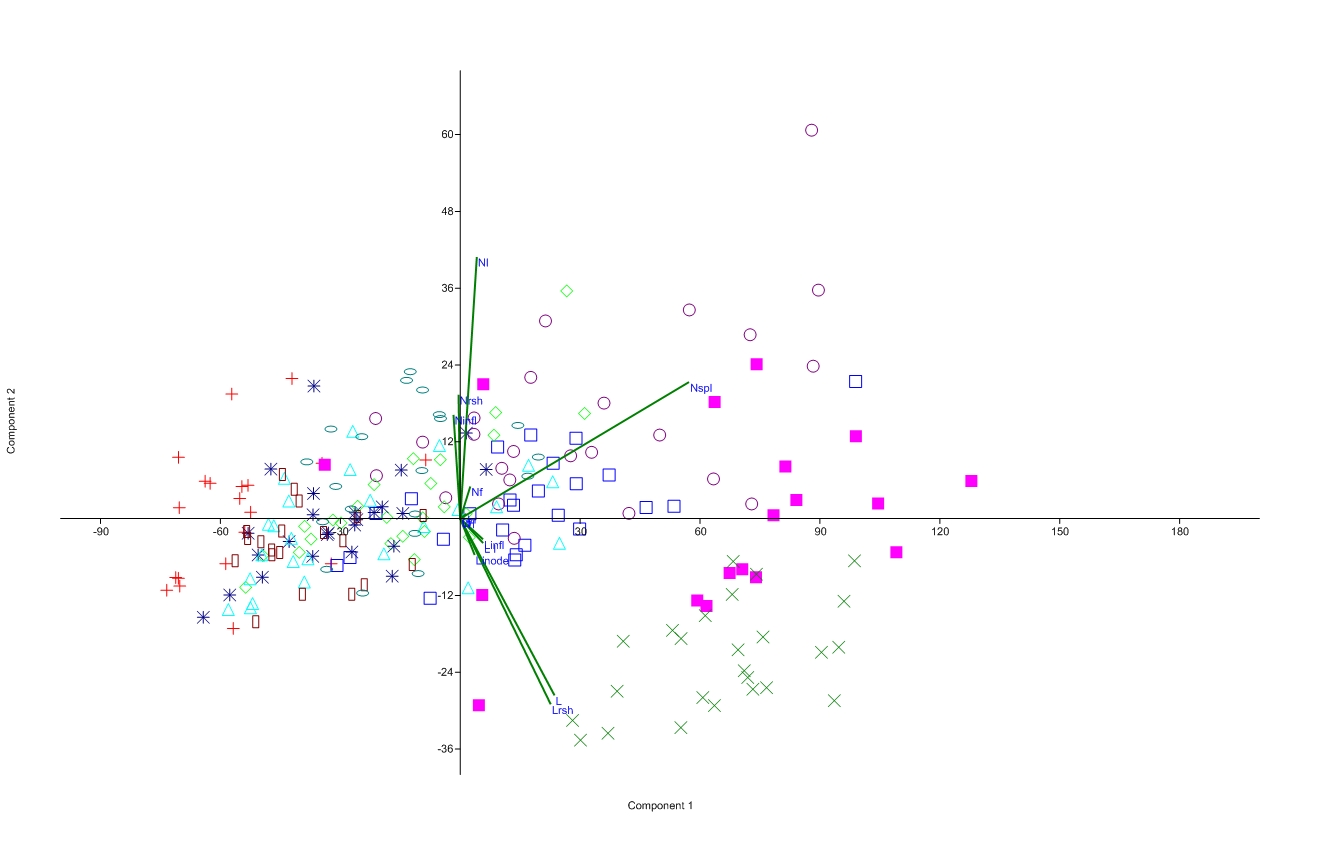The evaluation of adaptation of Eragrostis minor Host. (Poaceae) coenopopulations to the conditions of transformed environment
Abstract
Structural and functional features of E. minor, using morphometric traits and phytomass fractions of model coenopopulations are studied to determine adaptive capacity of species in different environments transformed the environment of forest, forest-steppe and steppe zones. Depending on edaphic conditions plants and organs of plants may increase several times in size and weight. The index of morphological integration of model coenopopulations indicates the uniformity of vegetative and generative organs of plants at different environmental conditions. In various conditions significant value to coenopopulations differentiation contribute signs of individual length as well as length and number of generative organs. Formation of the maximum number of spikelets (feature with the highest contribute to dispersion of data) corresponds to extreme edaphic conditions of growth combined with a high degree of recreation. However, decreasing environmental transformation is accompanied by double fulfillment of breeding potential of E. minor coenopopulations, while setting density of individuals reduce in almost 5-15 times. Thus, E. minor has mixed competitive Stress-tolerant Ruderal type as adaptation to condition of secondary areal.
References
Злобин Ю.А. 1989. Принципы и методы изучения ценотических популяций растений. Изд-во Казан. ун-та, Казань.
Злобин Ю.А. 2009. Популяционная экология растений: современное состояние, точки роста. Университетская книга, Сумы.
Злобін Ю.А., Кирильчук К.С., Тихонова О.М., Мельник Т.І. 2007. Взаємозумовленість формування вегетативної та генеративної сфер рослин: метод канонічних кореляцій. Укр. ботан. журн. 64 (2): 206–218.
Лавренко Е.М. 1940. Родина Злаки. Флора УРСР. 2: 386. Вид-во АН УРСР, Київ.
Пашкевич Н.А. 2012. Екологічні особливості розподілу рудеральних угруповань однорічних злаків Києва і Київської області. Синантропізація рослинного покриву України (м. Переяслав-Хмельницький, 27-28 вересня 2012 р.): 71–73.
Прокудин Ю.Н., Вовк А.Г., Петрова О.А. 1977. Злаки Украины. Наукова думка, Киев.
Протопопова В.В. 1991. Синантропная флора Украины и пути ее развития. Наук. думка, Киев.
Galera H., Sudnik-Wójcikowska B. 2010. Central European botanic gardens as centres of dispersal of alien plants. Acta Soc. Bot. Polon. 79 (2): 147–156.
Pashkevich N. 2013. Ecological assessment ruderal communities annual cereals Kyiv region (Ukraine). Fifth Inter. Symp. Ecologists of the Republic of Montenegro (Tivat, 2-5 October 2013): 82. Centre for Biodiversity of Montenegro, Tivat.


This work is licensed under a Creative Commons Attribution-NonCommercial-NoDerivatives 4.0 International License.
The journal is licensed by Creative Commons under BY-NC-ND license. You are welcome and free to share (copy and redistribute the material in any medium or format) all the published materials. You may not use the material for commercial purposes. You must give appropriate credit to all published materials.
The journal allow the author(s) to hold the copyrights and to retain publishing rights without any restrictions. This is also indicated at the bottom of each article.





